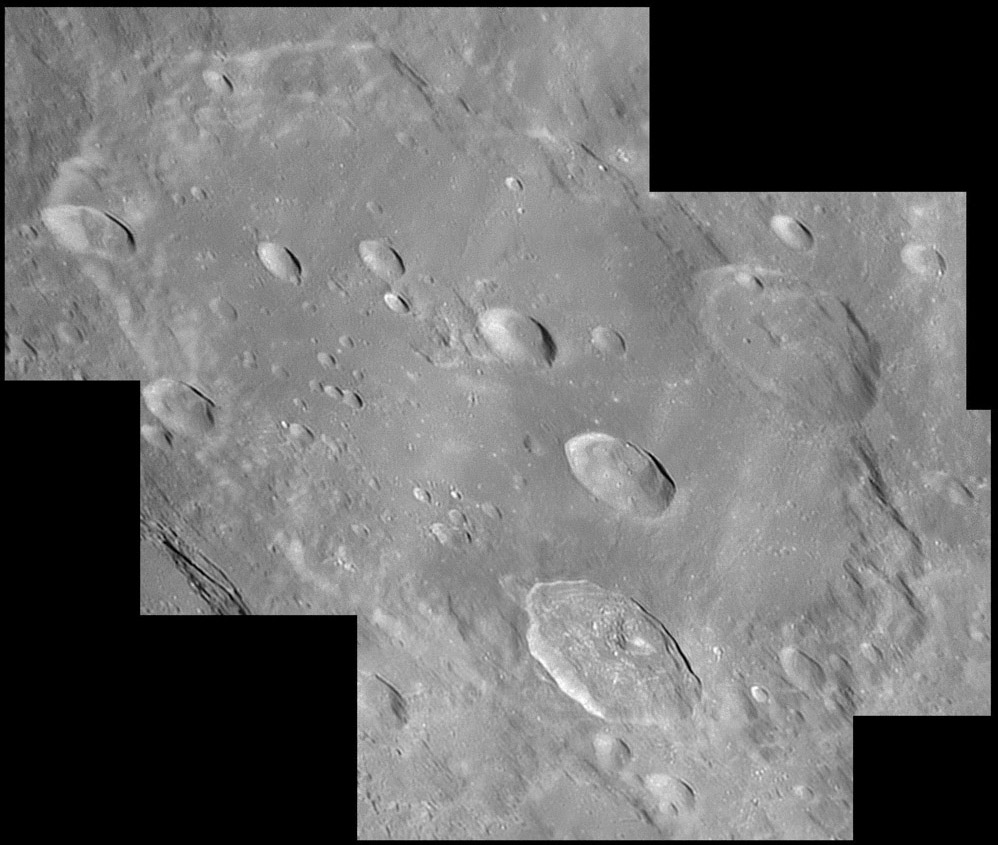image by Damian Peach
At 225 km wide and nearly 5 km deep, Clavius dominates the southern highlands when the illumination is low, but near full Moon it nearly disappears. In between these extremes Clavius is wide open, its floor fully exposed, with just enough shadowing to highlight scarps. Damian’s gorgeous shot shows a smooth floor with a few stubby central peaks. The floor is generally thought to be fluidized ejecta from Orientale or Imbrium; it could be lava flows, but certainly not dark ones like mare basalts. The youngest, somewhat large crater - Rutherfurd (54 km, bottom-center on Clavius’ rim) - has totally slumped walls and possible patches of impact melt on its floor. Ejecta from Rutherfurd radiates away in a few lines of just resolved secondary crater pits. A nice Christmas present.
Technical Details:
4 November, 2006. C14 @ F41. Lumenera Skynyx 2.0M. 8 frame mosiac. Good seeing. Taken through shallow fog!
Related Links:
Rükl chart 72
Damian’s website
Yesterday's LPOD: Measuring a Serpent
Tomorrow's LPOD: A Crater with Everything
COMMENTS?
Register, Log in, and join in the comments.




